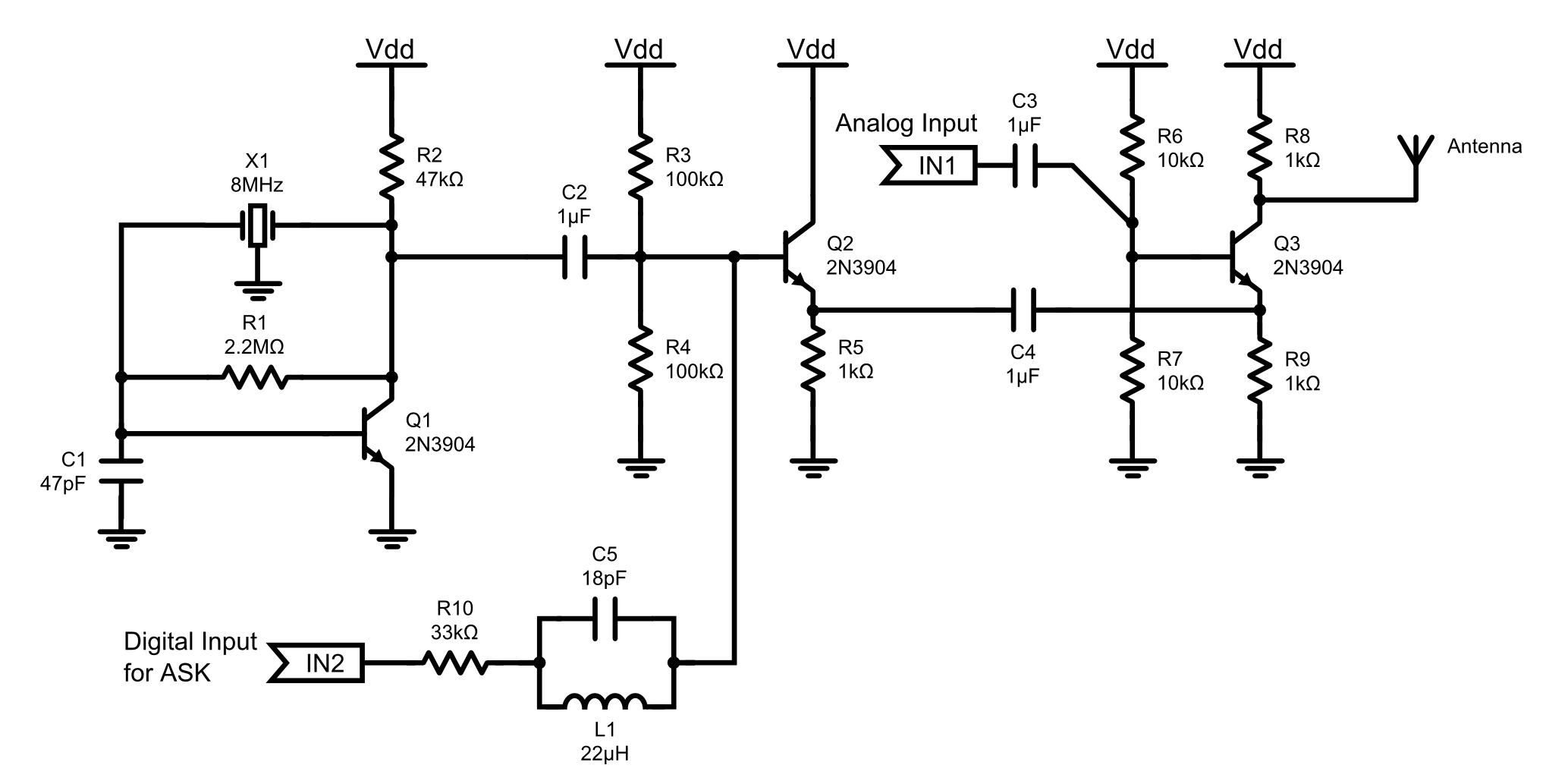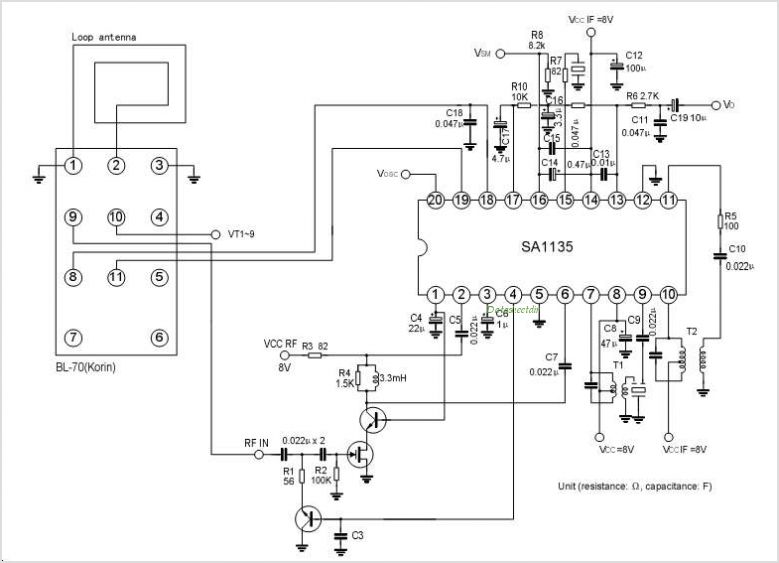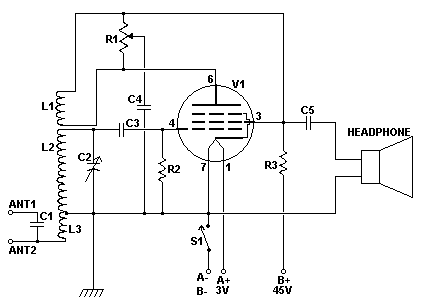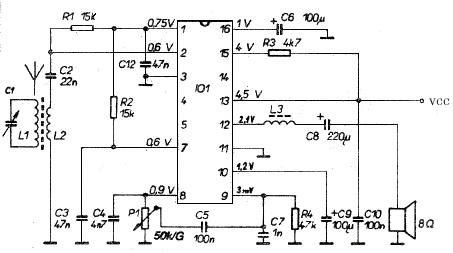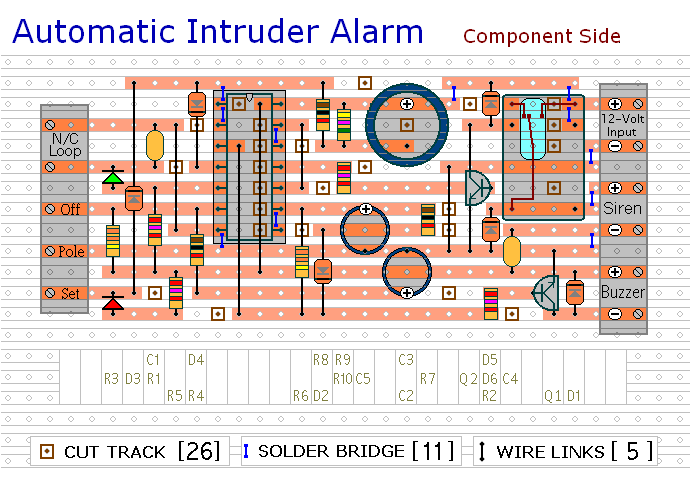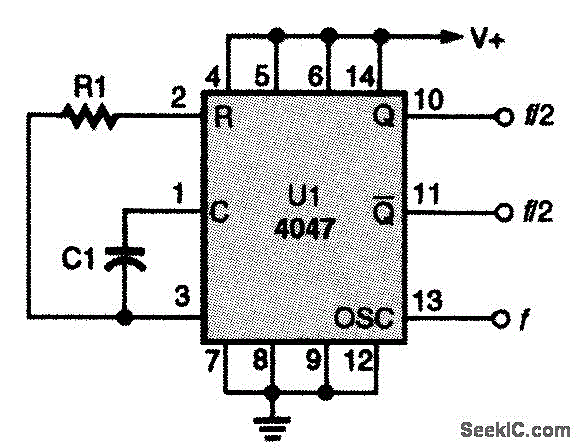
Millimeter-Wave CMOS Impulse Radio

An edge combiner utilizing MOSFETs C and D is designed to generate a 16 ps pulse. The center frequency varies as a function of the NMOS width (Wser) relative to the inverter width (Winv). Figure 12 illustrates the transmitted, reflected, dissipated, and leaked signals of a switch in both the ON and OFF states of the modulator as the millimeter-wave signal travels from the source to the load. Figure 13 depicts (a) impedance transformation along the modulator and (b) the calculated reflected, dissipated, and leaked powers as a function of the transmission line distance between switches. Figure 16 presents transient simulation results, including (a) a 200 ps applied data pulse, and the responses of (b) the gate voltage of the NMOSFET switch, as well as (c) input and (d) output signals. Figure 22 shows the architecture of (a) a single-ended millimeter-wave pulse transmitter with an off-chip 60 GHz continuous-wave (CW) source and (b) a proposed differential-ended pulse transmitter with an on-chip 60 GHz CW source. Figure 27 provides measurements of (a) the operating frequency of the oscillator and (b) power dissipation and output millimeter-wave power of the oscillator as a function of supply voltage. Millimeter waves, which are electromagnetic waves with wavelengths ranging from 1 to 10 mm in a vacuum, were first experimentally discovered in the 19th century (Wiltse, 1984). The unique characteristic of millimeter waves, specifically oxygen absorption at 60 GHz, was reported in 1946, leading to rapid attenuation of electromagnetic waves in the atmosphere (Beringer, 1946). While this absorption complicates long-distance wireless communication, it allows for the allocation of a wide frequency band, facilitating ultra-high-speed communication exceeding 1 Gbps (gigabits per second). Recently, the notable features of millimeter-wave communication have garnered renewed interest, particularly due to the realization of millimeter-wave circuits with advanced CMOS technologies and the establishment of license-free regulations for the 60 GHz band, which provide bandwidths of 9 GHz in Europe and 7 GHz in Japan, the USA, Canada, and Korea. Numerous studies on millimeter-wave CMOS circuits have been published in academic conferences and journals in recent years, indicating that consumer devices are anticipated to be available soon. To realize consumer applications of millimeter waves, reducing power consumption is crucial. The power-intensive components in a transceiver include the local oscillator (LO) based on the phase-locked loop (PLL) and the analog-to-digital and digital-to-analog converters (ADC and DAC), as illustrated in Figure 1 (a) (Marcu, 2009). If these components can be partially or completely eliminated from a transceiver, significant reductions in power consumption can be achieved. This study focuses on millimeter-wave pulse communication for high-performance CMOS wireless transceivers, as shown in Figures 1 (b) and (c). It discusses low-power direct pulse generators, high-speed switches, and receivers, which are essential building blocks for high-speed wireless communications utilizing the 60 GHz band. The section concludes with an overview of the future prospects for millimeter-wave pulse communication. Three low-power 60 GHz CMOS pulse transmitter circuits are introduced: the first is a carrier-less direct pulse generator circuit (Badalawa, 2007), the second is an 8 Gbps millimeter-wave CMOS switch designed for an Amplitude Shift Keying (ASK) modulator (Oncu, 2008), and the third presents a design of a low-power 10 Gbps block diagram for wireless communication, which includes (a) carrier modulation, (b) a direct pulse generator without an oscillator, and (c) a pulse generator with a millimeter-wave oscillator. The CMOS transmitter for a 60 GHz millimeter-wave impulse radio integrates a 60 GHz millimeter-wave continuous-wave (CW) source and ASK modulator circuits on the same silicon substrate.
The edge combiner design integrates MOSFETs C and D, which are critical for pulse generation with a target of 16 ps. The performance of the edge combiner is highly dependent on the NMOS width (Wser) in relation to the inverter width (Winv), as this relationship influences the center frequency of the generated pulses. The analysis of signal behavior in the modulator, illustrated in Figure 12, is essential for understanding the dynamics of transmitted, reflected, dissipated, and leaked signals during operation. The impedance transformation along the modulator, shown in Figure 13, is significant for optimizing the performance of the device, ensuring minimal signal loss and effective power transfer.
Transient simulations, as depicted in Figure 16, provide insight into the response characteristics of the NMOSFET switch, which is vital for evaluating the timing and integrity of the generated signals. The architecture of the millimeter-wave pulse transmitter, whether single-ended or differential-ended, plays a crucial role in defining the operational efficiency and spectral characteristics of the system. Measurement data in Figure 27 highlights the correlation between the oscillator's operating frequency, power dissipation, and output power, offering valuable metrics for performance assessment in practical applications.
Millimeter waves, characterized by their short wavelengths, present unique challenges and opportunities for wireless communication. The historical context of their discovery and the implications of oxygen absorption at 60 GHz underline the importance of material properties and environmental factors in system design. The advancements in CMOS technology have paved the way for innovative circuit designs that leverage the benefits of millimeter-wave frequencies, particularly in terms of bandwidth availability and communication speed. The reduction of power consumption remains a critical focus area, particularly for components such as local oscillators and converters, which traditionally consume significant power in transceiver architectures. The presented low-power pulse transmitter circuits exemplify the ongoing efforts to optimize performance while addressing power efficiency, thereby enhancing the feasibility of millimeter-wave applications in consumer electronics.An edge combiner comprising MOSFETs C and D has to generate a 16ps pulse. Centre frequency as a function of NMOS width Wser over inverter width Winv. Figure 12. Illustration of transmitted, reflected, dissipated and leaked signals of a switch in the (a) ON and (b) OFF states of the modulator when the millimeter-wave signal travels from source to the load. Figure 13. a) Impedance transformation along the modulator and (b) calculated reflected, dissipated and leaked powers as a function of the transmission line distance between switches. Figure 16. Transient simulation; (a) 200ps applied data pulse, and responses of (b) the gate voltage of the NMOSFET switch, and (c) input and (d) output signals.
Figure 22. Architecture of (a) a single-ended millimeter-wave pulse transmitter with off-chip 60GHz CW source and (b) a proposed differential-ended pulse transmitter with on-chip 60GHz CW source. Figure 27. Measured (a) operating frequency of the oscillator and (b) power dissipation and output millimeter-wave power of the oscillator as a function of supply voltage.
Millimeter waves are electromagnetic waves with wavelengths of 1 to 10 mm in vacuum, and they were discovered experimentally in the 19th century ( Wiltse, 1984 ). In 1946, the most unique feature of millimeter waves, oxygen absorption at 60 GHz, was reported, which results in the rapid attenuation of electromagnetic waves in the air ( Beringer, 1946 ).
Although the oxygen absorption makes long-distance wireless communication difficult, it enables us to allocate a wide frequency band, which realizes ultra-high-speed communication greater than 1Gbps (gigabits-per-second). Recently, the well-known feature of millimeter-wave communication has attracted attention again because millimeter-wave circuits have been realized with advanced CMOS technologies, and the recent 60GHz band license-free regulations with license-free bandwidths of 9GHz in Europe and 7GHz in Japan, USA, Canada and Korea.
In academic conferences and journals, many studies on millimeter-wave CMOS circuits were reported in the past few years, and consumer devices are expected to be available soon. Here, for realizing the consumer application of millimeter waves, the reduction of power consumption is the most important issue.
It is noted that the power-hungry building blocks in a transceiver are the local oscillator (LO) based on the phase-locked loop (PLL), and analog-to-digital and digital-to-analog converters (ADC and DAC) as shown in Figure 1 (a) ( Marcu, 2009 ). If these blocks can be eliminated partially or completely in a transceiver, power consumption will be considerably reduced.
From this viewpoint, we have studied millimeter-wave pulse communication for high-performance CMOS wireless transceivers as shown in Figure 1 (b) and Figure 1 (c). In this study, low-power direct pulse generators, high-speed switches and receivers, which are the most important building blocks in millimeter-wave pulse communication, are discussed for high-speed wireless communications using the 60 GHz band.
In conclusion, the prospects for millimeter-wave pulse communication will be addressed. In this section, three low-power 60GHz CMOS pulse transmitter circuits are presented. The first one is a carrier-less direct pulse generator circuit, ( Badalawa, 2007 ). The second design presents an 8Gbps millimeter-wave CMOS switch used for an Amplitude Shift Keying (ASK) modulator ( Oncu, 2008, and the last one presents a design of a low-power 10Gbps Block diagram of wireless communication based on (a) carrier modulation, (b) direct pulse generator without oscillator, (c) pulse generator with millimeter-wave oscillator. CMOS transmitter for a 60GHz millimeter-wave impulse radio, where a 60GHz millimeter-wave continues-wave (CW) source and ASK modulator circuits are embedded on the same silicon substrate.
The circuit topology of the proposed pulse generator (PG) 🔗 External reference
The edge combiner design integrates MOSFETs C and D, which are critical for pulse generation with a target of 16 ps. The performance of the edge combiner is highly dependent on the NMOS width (Wser) in relation to the inverter width (Winv), as this relationship influences the center frequency of the generated pulses. The analysis of signal behavior in the modulator, illustrated in Figure 12, is essential for understanding the dynamics of transmitted, reflected, dissipated, and leaked signals during operation. The impedance transformation along the modulator, shown in Figure 13, is significant for optimizing the performance of the device, ensuring minimal signal loss and effective power transfer.
Transient simulations, as depicted in Figure 16, provide insight into the response characteristics of the NMOSFET switch, which is vital for evaluating the timing and integrity of the generated signals. The architecture of the millimeter-wave pulse transmitter, whether single-ended or differential-ended, plays a crucial role in defining the operational efficiency and spectral characteristics of the system. Measurement data in Figure 27 highlights the correlation between the oscillator's operating frequency, power dissipation, and output power, offering valuable metrics for performance assessment in practical applications.
Millimeter waves, characterized by their short wavelengths, present unique challenges and opportunities for wireless communication. The historical context of their discovery and the implications of oxygen absorption at 60 GHz underline the importance of material properties and environmental factors in system design. The advancements in CMOS technology have paved the way for innovative circuit designs that leverage the benefits of millimeter-wave frequencies, particularly in terms of bandwidth availability and communication speed. The reduction of power consumption remains a critical focus area, particularly for components such as local oscillators and converters, which traditionally consume significant power in transceiver architectures. The presented low-power pulse transmitter circuits exemplify the ongoing efforts to optimize performance while addressing power efficiency, thereby enhancing the feasibility of millimeter-wave applications in consumer electronics.An edge combiner comprising MOSFETs C and D has to generate a 16ps pulse. Centre frequency as a function of NMOS width Wser over inverter width Winv. Figure 12. Illustration of transmitted, reflected, dissipated and leaked signals of a switch in the (a) ON and (b) OFF states of the modulator when the millimeter-wave signal travels from source to the load. Figure 13. a) Impedance transformation along the modulator and (b) calculated reflected, dissipated and leaked powers as a function of the transmission line distance between switches. Figure 16. Transient simulation; (a) 200ps applied data pulse, and responses of (b) the gate voltage of the NMOSFET switch, and (c) input and (d) output signals.
Figure 22. Architecture of (a) a single-ended millimeter-wave pulse transmitter with off-chip 60GHz CW source and (b) a proposed differential-ended pulse transmitter with on-chip 60GHz CW source. Figure 27. Measured (a) operating frequency of the oscillator and (b) power dissipation and output millimeter-wave power of the oscillator as a function of supply voltage.
Millimeter waves are electromagnetic waves with wavelengths of 1 to 10 mm in vacuum, and they were discovered experimentally in the 19th century ( Wiltse, 1984 ). In 1946, the most unique feature of millimeter waves, oxygen absorption at 60 GHz, was reported, which results in the rapid attenuation of electromagnetic waves in the air ( Beringer, 1946 ).
Although the oxygen absorption makes long-distance wireless communication difficult, it enables us to allocate a wide frequency band, which realizes ultra-high-speed communication greater than 1Gbps (gigabits-per-second). Recently, the well-known feature of millimeter-wave communication has attracted attention again because millimeter-wave circuits have been realized with advanced CMOS technologies, and the recent 60GHz band license-free regulations with license-free bandwidths of 9GHz in Europe and 7GHz in Japan, USA, Canada and Korea.
In academic conferences and journals, many studies on millimeter-wave CMOS circuits were reported in the past few years, and consumer devices are expected to be available soon. Here, for realizing the consumer application of millimeter waves, the reduction of power consumption is the most important issue.
It is noted that the power-hungry building blocks in a transceiver are the local oscillator (LO) based on the phase-locked loop (PLL), and analog-to-digital and digital-to-analog converters (ADC and DAC) as shown in Figure 1 (a) ( Marcu, 2009 ). If these blocks can be eliminated partially or completely in a transceiver, power consumption will be considerably reduced.
From this viewpoint, we have studied millimeter-wave pulse communication for high-performance CMOS wireless transceivers as shown in Figure 1 (b) and Figure 1 (c). In this study, low-power direct pulse generators, high-speed switches and receivers, which are the most important building blocks in millimeter-wave pulse communication, are discussed for high-speed wireless communications using the 60 GHz band.
In conclusion, the prospects for millimeter-wave pulse communication will be addressed. In this section, three low-power 60GHz CMOS pulse transmitter circuits are presented. The first one is a carrier-less direct pulse generator circuit, ( Badalawa, 2007 ). The second design presents an 8Gbps millimeter-wave CMOS switch used for an Amplitude Shift Keying (ASK) modulator ( Oncu, 2008, and the last one presents a design of a low-power 10Gbps Block diagram of wireless communication based on (a) carrier modulation, (b) direct pulse generator without oscillator, (c) pulse generator with millimeter-wave oscillator. CMOS transmitter for a 60GHz millimeter-wave impulse radio, where a 60GHz millimeter-wave continues-wave (CW) source and ASK modulator circuits are embedded on the same silicon substrate.
The circuit topology of the proposed pulse generator (PG) 🔗 External reference
Warning: include(partials/cookie-banner.php): Failed to open stream: Permission denied in /var/www/html/nextgr/view-circuit.php on line 713
Warning: include(): Failed opening 'partials/cookie-banner.php' for inclusion (include_path='.:/usr/share/php') in /var/www/html/nextgr/view-circuit.php on line 713
